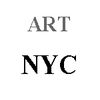The Handmaid's Tale, Margaret Atwood, 1985
The Handmaid's Tale is a dystopian novel, but the themes it deals with are not far from our present. Margaret Atwood's book discusses women's lack of power in a patriarchal society, their loss of rights over their own bodies and reproductive functions, and how they try to resist this.
A passage from the book particularly impressed me: “What I need is perspective—the illusion of depth, created by a frame, is the arrangement of shapes on a flat surface. Perspective is necessary. Otherwise, there are only two dimensions. Otherwise, you live with your face squashed up against a wall, with a huge foreground of details, close-ups, hairs, the weave of the bedsheet, and the molecules of the face. Your skin is like a map, a diagram of futility, crisscrossed with tiny roads that lead nowhere. Otherwise, you live in the moment. Which is not where I want to be.”
Perspective... flat surface… two dimensions... your skin like a map… roads that lead nowhere… not where I want to be….These words resonated powerfully within me. On February 27, 2019, I was on a train heading to Bologna, the city I had moved to a few months before, and I was frantically taking notes in my notebook. I remember that day well. It was one of those rare days that, now and then and without an apparent reason, managed to escape the furious homologation of the weeks and reclaim their space and uniqueness. It is one of those days when, despite the coercion of routine, something calls for your attention and forces you to wake up.
The coach I was in was packed with commuters angry about the delays, the overcrowding, and the tone of voice of their seatmate; outside, the air was warm and smelled of spring; the sky, slightly veiled in fog, hinted at a rosy sunset. While I saw hundreds of other stations whizzing by outside the window, I remember that the sensation came to me, sudden and romantic, of not going towards my apartment in Bologna but of being on a journey towards an unknown destination, of experiencing the beginning of an adventure with an uncertain outcome and of not being intimidated by this uncertainty but, on the contrary, fascinated. The feeling knocking on my head for the first time in a long time was like freedom.
One of the notes I left in the notebook that day states: “The tangle of the tracks like the embroidery of the veins under the skin—infinite journeys inside me, infinite disorientations. The destination is not at the end of the road but at the end of my body. […] The whole road I have traveled is inside me. I have nothing other than this body, mapped out with paths, to oppose to those who can only see the road made outside, on paper".
Disjointed and a little ungrammatical, the notes continue, discussing illusory perspectives, depths, paths, and disorientations. In those few lines, there is a great openness to the future and, at the same time, a strong compassion towards the past. That day, on that train, I realized how important all the choices I had made were, even if—as many told me—they had taken me "nowhere."
That day, I understood how people's lives tend to follow straight trajectories with pre-established stages in a precise order: finish school - find a job - save money - find a partner - get a house - and start a family; the same trajectories that must be read in the curriculum vitae: school education - academic path - grades and awards - professional experience consistent with the study path - any specialization courses and career advancement. They are equal and parallel lines that do not consider people's different inclinations, orientations, or desires. They do not feel the quality of time, only its quantity. They involve a tight pace and particular goals for each stage.
If you don't follow the straight path, if you go obliquely, if you go back, if you skip a step, if you proceed in a circle, in a spiral, in a zigzag, if you stop to think, you are strange; you are wrong or - again - you are going “nowhere.” Following the line means being aligned. Being all aligned means establishing a norm. Being part of the norm means representing normality and the right to judge what is not normal.
If the destination is already decided, it is the same for everyone and represents normality. Building your own destination and your own path outside the pre-established one means moving invisibility: not being seen and recognized by others as you are not aligned with the majority.
This is painful, even if our “non-straight” choices make us happy. It is painful because our happiness is not seen and recognized by those around us, often not even by those who love us, because it is not aligned with their own happiness. Sometimes, you feel like the Sphere inside the world of Flatland: you try to explain that sometimes life is everything around that line, but no one can believe you.
Atwood writes: “A rat in a maze is free to go anywhere, as long as it stays inside the maze.”


![[100 Challenge] Roberta Gattel_94](http://artnycnewyork.com/cdn/shop/articles/DAY_94_1100x.png?v=1742301219)